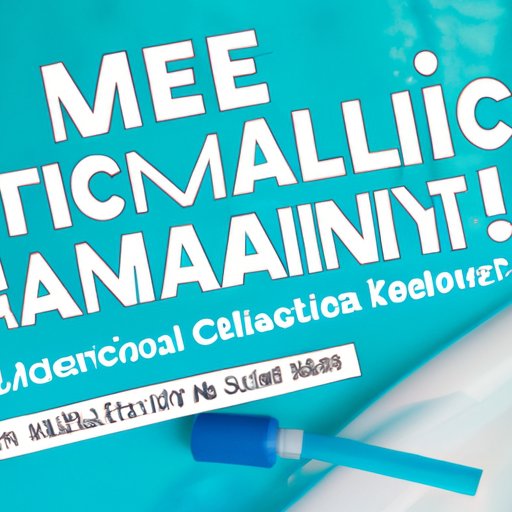
I. Introduction
When it comes to owning a pool, safety and cleanliness should always be a top priority. Not only do clean pools look better and last longer, but they also provide a healthier and more enjoyable environment for swimmers. One crucial aspect of pool maintenance is keeping the water properly disinfected, and that’s where free chlorine comes in. In this article, we’ll explore what free chlorine is, why it’s important, and how to maintain safe and clean pool water.
II. What is Free Chlorine and Why is it Important?
Free chlorine is a crucial component in pool maintenance as it works to sanitize and disinfect pool water by killing harmful bacteria and germs. Free chlorine is the active form of chlorine that’s readily available to do this work. When chlorine is added to water, it forms different chemical compounds depending on the water chemistry, temperature, and other factors. Free chlorine is the amount of chlorine present in the water that’s not bound (or “used up”) by these compounds and still available to do its job.
Recommended free chlorine levels vary depending on pool type and usage, but the Centers for Disease Control and Prevention (CDC) advises a minimum of 1 ppm (parts per million) for residential swimming pools, and 2-4 ppm for public pools. Water with lower levels of free chlorine can still be effective in killing germs, but it would take longer to do so. On the other hand, high levels of free chlorine could cause skin irritation and other health problems.
There are different methods of disinfection commonly used in pools such as chlorine tablets, liquid chlorine, granular chlorine, and saltwater systems. Each method has its pros and cons, such as ease of use, cost, and effectiveness of killing bacteria. It’s important to choose the method that’s best for your pool type and usage.
III. How to Test Pool Water for Free Chlorine
Testing for free chlorine levels is a simple but crucial part of pool maintenance. There are two primary methods of testing: test strips and liquid reagents. Test strips are the easiest and most convenient to use as they require only a quick dip into the water and immediate comparison to a color chart. Liquid reagents require more steps but are more accurate and can test for a broader range of chemical levels.
Regardless of the method, it’s recommended to test free chlorine levels at least once a week and adjust pH balance if necessary. It’s important to keep in mind the ideal range (as per CDC recommendations mentioned above) and to take appropriate action if free chlorine levels fall too low or too high. Tips on interpreting test results and troubleshooting common issues are often available with the test kits’ instruction booklet.
IV. Natural Alternatives to Chlorine Disinfection
While chlorine is the most common disinfectant used in pools, there are natural alternatives available such as saltwater systems, ultraviolet light, and ozone generators. Saltwater systems use a salt cell and electricity to create chlorine from salt, eliminating the need for added chemicals. Ultraviolet light and ozone generators use light or gas to kill bacteria and sanitize pool water.
Each system offers different benefits and drawbacks, such as cost, maintenance, and effectiveness, and it’s important to weigh the options before choosing. Saltwater systems, for example, are more expensive upfront but require less maintenance and may be less irritating to sensitive skin. Ultraviolet light and ozone generators require less chlorine in the water, reducing the amount of chemicals needed.
V. Addressing Myths and Misconceptions about Free Chlorine
There are many myths and misconceptions about free chlorine in pools, which can lead to unsafe practices and ineffective pool maintenance. For example, the idea that more chlorine is always better is false: too much chlorine can cause skin and eye irritation, reduce the effectiveness of the disinfectant, and even create harmful fumes. Another myth is that sunlight and heat can boost free chlorine levels, but the opposite is true – high temperatures and prolonged sunlight can actually break down chlorine more quickly.
It’s important to understand the risks of using too little chlorine and to always strive for recommended levels. Low levels of free chlorine can lead to the growth of harmful bacteria, parasites, and viruses, which can cause illness and infections.
VI. Q&A with a Pool Expert
For additional expert advice on free chlorine and pool maintenance, we’ve compiled some common questions and concerns:
- Q: Can I use bleach instead of liquid chlorine in my pool?
- A: Yes, you can use bleach as a source of free chlorine, as long as it isn’t scented or has other additives that could harm the pool chemistry. The recommended ratio is 1 gallon of bleach per 10,000 gallons of water.
- Q: How common are saltwater systems?
- A: Saltwater systems are becoming increasingly popular as an alternative to traditional chlorine disinfection. They’re more expensive upfront but can save money and time in the long run, especially for larger pools.
- Q: What should I do if my free chlorine levels are too high?
- A: If free chlorine levels are above recommended levels, you should avoid swimming until they subside. Adding fresh water to the pool and running the pump for a few hours can help lower the levels.
- Q: Can I use hydrogen peroxide instead of chlorine?
- A: While hydrogen peroxide may work as a disinfectant, it’s not recommended as a sole agent for pool water as it may not be effective enough in killing all the germs present.
VII. Conclusion
Keeping pool water safe and clean is crucial for both health and enjoyment. By understanding the importance of free chlorine and how to maintain proper levels, owners can ensure a healthy and comfortable swimming environment. It’s equally important to pay attention to common myths and misconceptions and to seek out expert advice when needed. By following these guidelines, owning a pool can be a pleasure rather than a hassle.




